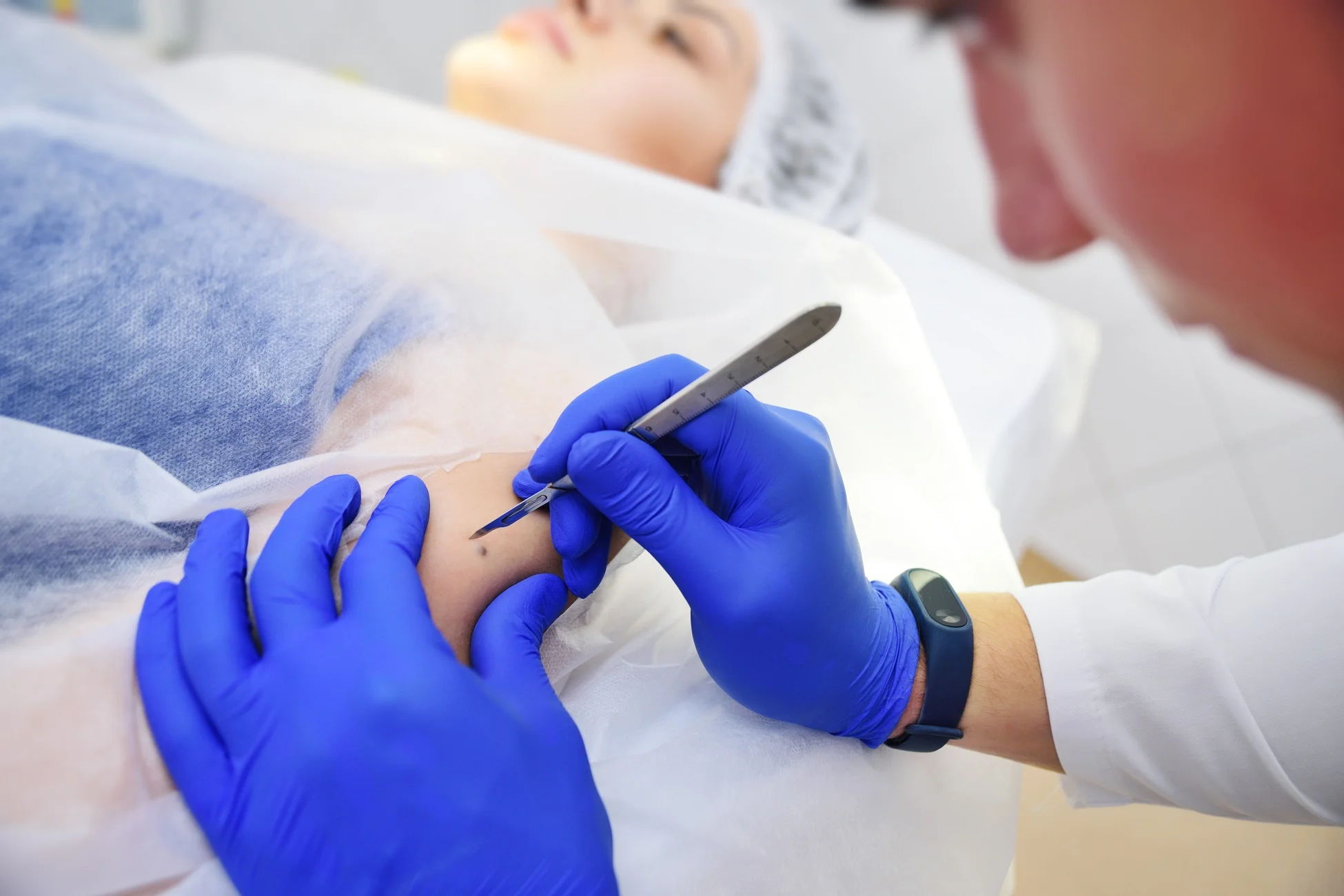Mole removal in Northbrook, IL

mole removal surgery
Mole removal is a procedure used to eliminate moles that may be suspicious for skin cancer or cause cosmetic concerns. The process begins with a thorough examination by a dermatologist to assess the mole and determine the best removal method. The most common techniques include surgical excision, where the mole is cut out with a small margin of surrounding skin, and shave removal, where the mole is shaved off the skin’s surface. Local anesthesia is applied to numb the area, making the procedure comfortable for the patient. After removal, the mole may be sent to a lab for a biopsy to rule out any signs of skin cancer. Mole removal aims to safely eliminate the mole while minimizing scarring and preserving the skin’s appearance.
Mole removal is suitable for anyone who has a mole that is changing in size, shape, or color, causing discomfort, or is simply unwanted for cosmetic reasons. Patients often see immediate results after the procedure, with the treated area healing over the following weeks. The results are long-lasting, as the mole is completely removed. If you’re considering Mole Removal in Northbrook, IL, and want to ensure the best care, book an appointment at Derm Collective North Shore and discuss your options with a board-certified dermatologist.
Benefits of Mole Removal
- Reduces the risk of skin cancer
- Provides peace of mind with professional evaluation
- Removes irritating or itchy moles
- Improves cosmetic appearance
- Minimizes the risk of infection
- Quick procedure with minimal downtime
- Long-lasting results
- Customized treatment based on mole characteristics
- Professional follow-up care and monitoring
- Enhances overall skin health and appearance
Faqs About Mole Removal
Will mole removal leave a scar?
There may be a small scar after mole removal, but the size and visibility of the scar depend on the removal method and the size of the mole. Dermatologists take care to minimize scarring and provide aftercare instructions to help the scar heal well.
How do I know if a mole needs to be removed?
A mole should be evaluated for removal if it changes in size, shape, or color, becomes symptomatic (itchy, painful, or bleeding), or if it poses a cosmetic concern. It’s important to consult a dermatologist for an accurate assessment.
How long does it take for the area to heal after mole removal?
Most patients can expect the area to heal within 1 to 2 weeks but healing time still varies depending on the size and location of the mole. Your dermatologist will provide specific aftercare instructions to promote healing.
Can all moles be removed using the same method?
Different moles may require different removal methods. Some moles are best removed with surgical excision, while others may be suitable for shave removal. The dermatologist will choose the most appropriate method based on the mole’s characteristics.
What are the risks related to mole removal?
As with any procedure, mole removal is generally safe. There are still some risks, including infection, bleeding, and scarring. However, these risks are minimal when the procedure is performed by a skilled dermatologist.

